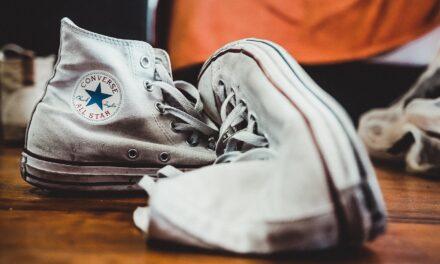Understanding women’s jean sizes conversion and how they relate to your body measurements and waistband measurement is the key to unlocking a world of comfort and style.
It’s time to put an end to the common misconceptions surrounding jean sizes and discover how proper sizing can revolutionize your wardrobe.
With our comprehensive guide, we’ll walk you through everything you need to know about women’s jean sizes conversion, including decoding the mysterious numbers on size tags and finding the ideal fit for your body type.
From measuring your waistband and natural waist to using our pants size conversion chart, our guide will be your ultimate style companion.
So why settle for ill-fitting jeans or jeggings when you can rock a pair that flatters your figure effortlessly?
Get ready to navigate the world of women’s jean sizes and jegging sizes like a pro as we debunk myths, provide practical tips, and empower you with knowledge about body measurements. Let’s dive in and unlock the secret behind perfectly fitted denim by understanding your natural waist measurement and waistband measurement!
Stay tuned for our next section where we unravel common misconceptions about women’s jean sizes, denim, and help you avoid fashion faux pas. Learn about the different fits of many jeans, including skinny jeans, and how to accurately measure your waist for the perfect fit.
Understanding Women’s Jean Sizes:
Different Sizing Systems Used by Various Brands
It can be quite confusing due to the different sizing systems used by various denim brands. Unlike men’s jeans that typically follow a standardized waist and inseam measurement, women’s jeans have their own unique sizing charts based on body measurements.
Brands often use different numbers or even letters to denote sizes, making it challenging for shoppers to find the right fit for their pants. Additionally, women’s jeans are often measured in inches.
To add to the confusion, some brands may have vanity sizing, where they intentionally label a larger size with a smaller number to appeal to customers’ egos. This means that you might wear a size 6 in one brand but need a size 10 in another.
It’s crucial to check each brand’s specific jean size chart before making a purchase. Additionally, when it comes to jeans sizes and pants sizes, it’s important to consider waist sizes as well. Many jeans vary in their waist sizes, so checking the size chart is essential.
Factors That Influence Variations in Jean Sizes
Understanding why jean sizes and waist measurements vary is essential for finding the perfect fit. One significant factor is the fabric composition of the pants. Denim can stretch differently depending on its blend of materials like cotton, polyester, and spandex.
A higher percentage of spandex will result in more stretchiness and potentially affect how snugly the jeans fit. Additionally, it’s important to consider international sizing when shopping for jeans as different countries may use different measurement systems, such as inches.
Another factor to consider when choosing jeans is the pants sizes and inseam size. Skinny jeans tend to have a tighter fit throughout the legs compared to bootcut or relaxed-fit options.
High-waisted jeans may require different sizing considerations than low-rise styles due to differences in hip-to-waist ratios. It can be helpful to consult a pants size conversion chart when shopping for denim.
Furthermore, variations can arise from regional preferences and cultural norms regarding body shape, waist sizes, and proportions. For example, European brands might cater more towards straighter figures and offer a range of pants sizes, while American brands may focus on accommodating curvier shapes and providing options in international sizing and jeans sizes.
Importance of Trying on Jeans Before Purchasing
Given the inconsistencies in women’s jean sizes across brands and styles, trying on jeans and pants before purchasing them becomes crucial. Relying solely on your usual size, especially with international sizing, might lead to disappointment when you discover that it doesn’t fit as expected.
By trying on jeans and pants, you can gauge the comfort, fit, and overall look to ensure they flatter your body shape, especially at the natural waist.
When trying on jeans or pants sizes, pay attention to how they feel around the waist, hips, thighs, and length. Remember that different brands might have different measurements for these areas.
Take note of any areas where the jeans or pants feel too tight or loose so you can make an informed decision about sizing up or down.
Also, it may be helpful to refer to a pants size conversion chart if you are unsure about misses size or size breaks.
How Body Shape Affects the Fit of Women’s Jeans
Women come in all shapes and sizes, and this diversity plays a significant role in how pants fit. Your body shape can influence whether a particular style of jeans or pants looks flattering or not.
Understanding your body shape will help you choose the right cut and style that enhances your best features. Additionally, considering international sizing and the US market can also be helpful when selecting the perfect pair of jeans.
Here are some common body shapes and recommended jean styles, along with a jeans size chart to help you find the perfect fit. Whether you’re looking for women’s jeans or pants sizes, this guide will ensure you find the right jeans sizes for your body shape.
- Hourglass: Emphasize your curves with high-waisted pants or bootcut jeans, perfect for us women.
- Pear-shaped: Opt for straight-leg or wide-leg jeans in your pants size to balance out wider hips. Consider your us waist size and find the right fit for us women. Look for size breaks that cater to your specific body shape.
- Apple-shaped: Look for mid-rise jeans with stretchy fabric to accommodate a fuller midsection. Find pants suitable for us waist size and size breaks, perfect for us women.
Decoding Waist Measurements in Women’s Jeans:
Understanding the Importance of Waist Measurement in Jean Sizing
Understanding waist measurements for pants is crucial for us women. The waist measurement determines how well the jeans or pants will fit around your midsection, ensuring both comfort and style.
It is important to note that waist sizes can vary across different brands, so knowing how to measure your waist accurately will help you find the right fit every time.
Different Methods Used to Measure Waist Size Accurately
To determine your correct waist measurement for jeans or pants, you need to follow a few simple steps. Here are some methods commonly used: — Your task is to slightly modify the text above to add new keywords with the following requirements so the text above looks more relevant to the reader: – Keywords to be added: size breaks, women – Ensure the keywords can be well fitted, or else ignore the keywords – Do not include additional information other than the keywords – Do not change the original sentence structure – Do not replace original words – You write in English language. No translation needed. — To
- Waist Circumference: Using a flexible measuring tape, wrap it around your natural waistline, which is located just above your belly button. Make sure the tape is snug but not too tight.
- US Waist Size: If you’re unsure about using inches or centimeters, refer to the US waist size chart provided by most clothing brands. This chart correlates specific measurements with corresponding sizes.
- Waistband Measurement: Lay a pair of well-fitting jeans flat on a surface and measure the distance across the top edge of the waistband from one end to another.
- Rise Waistband: The rise refers to the distance between the crotch seam and the top edge of the waistband. Measure this length on a pair of jeans that fit you comfortably.
Tips for Determining Your Correct Waist Measurement for Jeans
Finding your correct waist measurement for jeans sizes and pants, especially women jeans, might require some trial and error, but these tips can help make it easier.
- Take accurate body measurements: Use a flexible measuring tape and follow proper techniques when measuring yourself, including waist size for jeans sizes and pants, especially for women jeans.
- Consider different styles: Different women jeans styles have varying fits around the waist, such as low-waisted or high-waisted options. These jeans size options are available for pants.
- Read customer reviews: Check online reviews or ask friends who have purchased women’s pants from the same brand for insights into waist size and sizing accuracy.
- Try before you buy: If possible, visit a store and try on different sizes and styles of pants and women jeans to determine your best fit.
Understanding How Waist Measurements Differ Across Brands
It’s essential to remember that waist measurements for pants can differ significantly across brands, especially for women. This discrepancy arises due to variations in design, target demographics, and even manufacturing techniques. To ensure a proper fit when shopping for jeans or pants, keep these points in mind.
- Always check the size chart for women jeans and pants: Most online retailers provide detailed size charts specific to their brand. Take note of the recommended waist measurements for each size.
- Research specific brands: Some brands are known for running large or small in their sizing, especially when it comes to jeans size and women jeans. Look for customer feedback or reviews regarding the accuracy of their waist measurements, particularly for pants.
- Consider vanity sizing: Some brands may engage in vanity sizing, where they label larger sizes of women jeans and pants with smaller numbers to appeal to customers’ egos. Be aware of this practice and focus on accurate measurements of women jeans and pants rather than the number on the tag.
By understanding how waist measurements work and taking the time to measure yourself accurately, you’ll be well-equipped to find women’s pants and jeans that fit perfectly every time.
Unraveling Length Measurements in Women’s Jeans
Understanding Inseam and Outseam Measurements
Understanding length measurements is crucial, especially when it comes to pants. The two main measurements you need to be familiar with are inseam and outseam.
These measurements determine how long the legs of the pants are, helping you find a fit that flatters your body shape. Additionally, knowing your US waist size is important for finding the perfect fit.
The inseam refers to the distance from the crotch seam down to the hem of the jeans. It is an important measurement as it determines where the jeans will hit on your legs. The outseam, on the other hand, measures from the top of the waistband down to the hem.
Accurately Measuring Inseam and Outseam
To ensure you get accurate measurements for inseam and outseam of your jeans size and pants, follow these simple steps for women jeans. Make sure to consider your US waist size.
- Start by wearing a pair of well-fitting jeans or pants.
- Stand straight with your feet shoulder-width apart.
- Measure from the crotch seam down to where you want your jeans or pants to end for inseam measurement.
- For pants outseam measurement, measure from the top of your waistband down to where you want your pants to end.
- Take note of both measurements in inches or centimeters.
The Impact of Different Lengths on Fit and Style
Different lengths can greatly impact how jeans and pants fit and their overall style.
- Ankle-Length: Ankle-length jeans typically end right at or slightly above the ankle bone. They are great for showcasing footwear and creating a trendy, casual look.
- Regular-Length: Regular-length jeans usually fall right at or slightly below the heel when worn with shoes. They offer a classic look suitable for various occasions.
- Long-Length: Long-length jeans have extra fabric that extends beyond regular-length options, making them ideal for taller individuals or those who prefer a more relaxed fit.
- Petite-Length: Petite-length jeans are designed for shorter individuals and have a shorter inseam, ensuring a better fit without the need for alterations.
Finding the Right Length
Finding the right length for your jeans is essential for achieving a flattering look. Consider these tips to help you determine the perfect inseam size:
- Take into account your jeans size and leg shape and choose a length that accentuates your best features in women jeans.
- Experiment with different lengths and women jeans to find what works best for your personal style.
- Pay attention to women’s jeans size breaks, as some brands offer specific lengths within their women’s jeans size range.
- If you’re unsure about the length, opt for jeans with adjustable hems or consider getting them tailored.
Remember, when it comes to women’s jeans, finding the right inseam measurement and jeans size is subjective and depends on personal preference. Some individuals prefer cropped styles that show off their ankles, while others may prefer longer lengths that provide more coverage.
Navigating International Jean Size Conversions:
Overview of international size conversion charts for women’s jeans
International women jeans jean size conversions can be a tricky maze to navigate, especially with the variations in sizing systems across different countries. To ensure a perfect fit for women jeans, it’s essential to understand the differences between US, UK, European, and other sizing systems.
Differences between US, UK, European, and other sizing systems
- US Sizing: In the United States, women’s jean sizes typically range from 0 to 24W. These sizes are based on waist measurements in inches. For example, a size 4 corresponds to a 26-inch waist.
- UK Sizing: The United Kingdom follows a different system where sizes are measured in inches but have different numerical values compared to the US sizes. For instance, a UK size 8 is equivalent to a US size 4.
- European Sizing: Europe uses centimeters as the primary unit of measurement for jeans. The corresponding EU size can be determined by measuring your waist circumference and converting it into centimeters.
- Other Sizing Systems: Various countries like Australia and Japan have their own unique sizing systems that may differ from both US and European standards. It’s important to refer to specific conversion charts or consult with brands directly when dealing with these alternatives.
Tips for converting between different international jean sizes
Converting between international women jeans sizes can be challenging due to the discrepancies among sizing systems. Here are some helpful tips:
- Refer to Conversion Charts: Utilize online resources or brand-specific conversion charts that provide accurate measurements for each country’s sizing system, including jeans size and women jeans.
- Take Accurate Measurements: Measure your waist circumference, inseam length, and women jeans size accurately using a tape measure before consulting any conversion chart.
- Consider Body Shape: Different countries may have varying proportions in their standard sizing systems for women jeans. If you know you have wider hips or longer legs than average, take that into account when converting sizes.
- Try Before Buying: If possible, try on jeans from different brands and countries to determine which size fits you best. This can help you get a better understanding of how each sizing system translates for your body type.
Importance of referring to brand-specific conversion charts
While general international size conversion charts can provide a good starting point, it’s crucial to refer to brand-specific conversion charts whenever possible. Brands may have their own unique measurements and sizing standards that deviate from the general guidelines.
By checking the brand’s specific chart, you can ensure a more accurate fit and avoid any surprises when purchasing jeans online or in-store.
Tips for Accurate Measurements when Buying Jeans:
Importance of taking accurate body measurements before buying jeans
Having accurate measurements is crucial when determining your jeans size. You don’t want to end up with ill-fitting denim that makes you feel uncomfortable and self-conscious about your jeans size.
By taking the time to measure your body correctly, you can ensure a better fit for your jeans size and avoid unnecessary returns or disappointments.
Step-by-step guide on measuring waist, hips, inseam, etc.
- Waist: Use a tape measure to find the narrowest part of your waist, usually an inch above your belly button. Stand straight and relaxed while taking this measurement.
- Hips: Measure the widest part of your hips by wrapping the tape measure around your buttocks and hip bones.
- Inseam: This measurement determines the length of the jeans’ leg from crotch to ankle. Stand straight with your feet slightly apart, and have someone else measure from the inner thigh down to your ankle bone.
- Thighs: Wrap the tape measure around the fullest part of each thigh.
- Rise: Measure from the crotch seam up to where you want the waistband to sit—whether it’s low-rise, mid-rise, or high-rise.
Remember that different brands may have their own size charts or specific instructions for measuring certain areas like calves or knee width.
Common mistakes to avoid when measuring yourself for jeans
- Pulling too tight: Ensure that you’re not pulling too tightly when measuring any area as it could result in inaccurate measurements.
- Not standing naturally: Stand in a relaxed position without sucking in your stomach or sticking out your hips as this will affect accuracy.
- Using old measurements: Bodies change over time due to weight fluctuations or muscle gain/loss, so always remeasure yourself before purchasing new jeans.
- Measuring over bulky clothing: Remove any bulky clothing or thick layers when measuring yourself to get the most accurate measurements.
- Neglecting posture: Stand up straight and maintain good posture while taking measurements for a more precise fit.
Using measurement guides provided by brands or retailers
Many brands and retailers provide measurement guides on their websites, which can be incredibly helpful in finding the right size. These guides often include detailed instructions on how to measure different areas of your body, as well as size charts specific to their brand. Take advantage of these resources to ensure you’re choosing the correct size based on your measurements.
Remember that sizes may vary between brands, so it’s essential to consult each brand’s specific measurement guide rather than relying solely on your usual size.
By following these tips and accurately measuring yourself before purchasing jeans, you’ll increase your chances of finding the perfect fit that flatters your body shape. Don’t forget to double-check the sizing charts provided by brands or retailers and always read customer reviews for additional insights. Happy jean shopping!
Exploring Different Jean Size Charts and Converters
Are you tired of the endless struggle to find the perfect pair of jeans that fit just right? Well, fret no more! We’ll explore various online tools and resources, compare size charts from different brands, discuss the benefits and limitations of using converters versus brand-specific charts, and provide tips for effectively using size charts when shopping for jeans.
Overview of Popular Online Tools and Resources for Jean Size Conversion
There are plenty of online tools at your disposal. Here are some popular options:
- Size Conversion Chart Websites: These websites offer comprehensive databases with conversion information for different brands. Simply enter your current size or measurements, and they’ll provide you with a list of corresponding sizes across various brands.
- Brand-Specific Websites: Many major denim brands have their own size charts available on their websites. These charts are tailored to their specific sizing standards, making them a reliable resource when shopping within a particular brand.
Comparison Between Different Size Charts Available from Major Brands
Different brands often have variations in their sizing standards. To ensure a perfect fit, it’s essential to consult the right size chart for each brand you’re interested in. Here’s an example comparing two popular denim brands:
- Brand A:
- Size 0: Waist 24″, Hips 34″
- Size 2: Waist 25″, Hips 35″
- Size 4: Waist 26″, Hips 36″
- Brand B:
- Size XS: Waist 25″, Hips 35″
- Size S: Waist 27″, Hips 37″
- Size M: Waist 29″, Hips 39″
As you can see, even though both brands use standard sizing, there are slight variations in the measurements. Therefore, consulting the appropriate size chart for each brand is crucial to finding jeans that fit your curves perfectly.
Benefits and Limitations of Using Online Converters versus Brand-Specific Charts
Online converters can be a convenient tool when you’re unsure about which size to choose. However, it’s important to consider their limitations:
- Convenience: Converters provide a quick and easy way to find your size across multiple brands without having to visit individual websites.
- Variety: They offer a wide range of brands and sizes, giving you more options to explore.
On the other hand, brand-specific charts have their advantages too:
- Accuracy: Since they are tailored to specific brands, they provide more accurate sizing information.
- Reliability: Brand-specific charts come directly from the source, ensuring greater reliability.
Ultimately, it’s best to use both online converters and brand-specific charts as complementary resources for an informed shopping experience.
Finding the Perfect Fit with Women’s Jean Sizes:
In conclusion, understanding women’s jean sizes and finding the perfect fit doesn’t have to be a daunting task.
By decoding waist and length measurements, navigating international size conversions, and following tips for accurate measurements when buying jeans, you can confidently shop for the right pair.
It’s important to remember that different brands may have slight variations in their sizing charts. However, by knowing your waist and length measurements, you can easily determine which size will work best for you.
Decoding waist measurements in women’s jeans involves measuring around the narrowest part of your waist. This measurement will help you determine whether you need a smaller or larger size.
Unraveling length measurements is equally important as it ensures that the jeans are neither too long nor too short for your legs.
Navigating international jean size conversions is crucial if you’re purchasing jeans from a different country. Each country may have its own unique sizing system, so it’s essential to refer to conversion charts or online converters to ensure a proper fit.
To obtain accurate measurements when buying jeans, make sure to use a flexible measuring tape and follow specific guidelines provided by retailers or manufacturers. Taking precise measurements will save you from the hassle of returning ill-fitting jeans.
Exploring different jean size charts and converters can also be helpful in finding your perfect fit. Online resources provide access to various brands’ size guides and conversion tools that simplify the process of selecting the right size.
FAQs: Women’s Jean Sizes Conversion
Q: How do I measure my waist for women’s jeans?
To measure your waist for women’s jeans, use a flexible measuring tape and wrap it around the narrowest part of your waist. Make sure the tape is snug but not too tight.
Q: How do I determine the length measurement for women’s jeans?
To determine the length measurement for women’s jeans, measure from the top of your inner thigh down to your ankle bone. This will give you an accurate idea of how long the jeans should be.
Q: Are international jean sizes different from regular sizing?
Yes, international jean sizes can vary from regular sizing. Each country may have its own unique sizing system, so it’s important to refer to conversion charts or online converters when purchasing jeans from another country.
Q: Why is it important to take accurate measurements when buying jeans?
Taking accurate measurements when buying jeans ensures that you select the right size and avoid ill-fitting garments. It saves time and effort by reducing the need for returns or exchanges.
Q: Where can I find size charts and converters for different brands?
You can find size charts and converters for different brands on their official websites or through online retailers. These resources provide valuable information on how their sizing works and help you make informed decisions when purchasing jeans.













